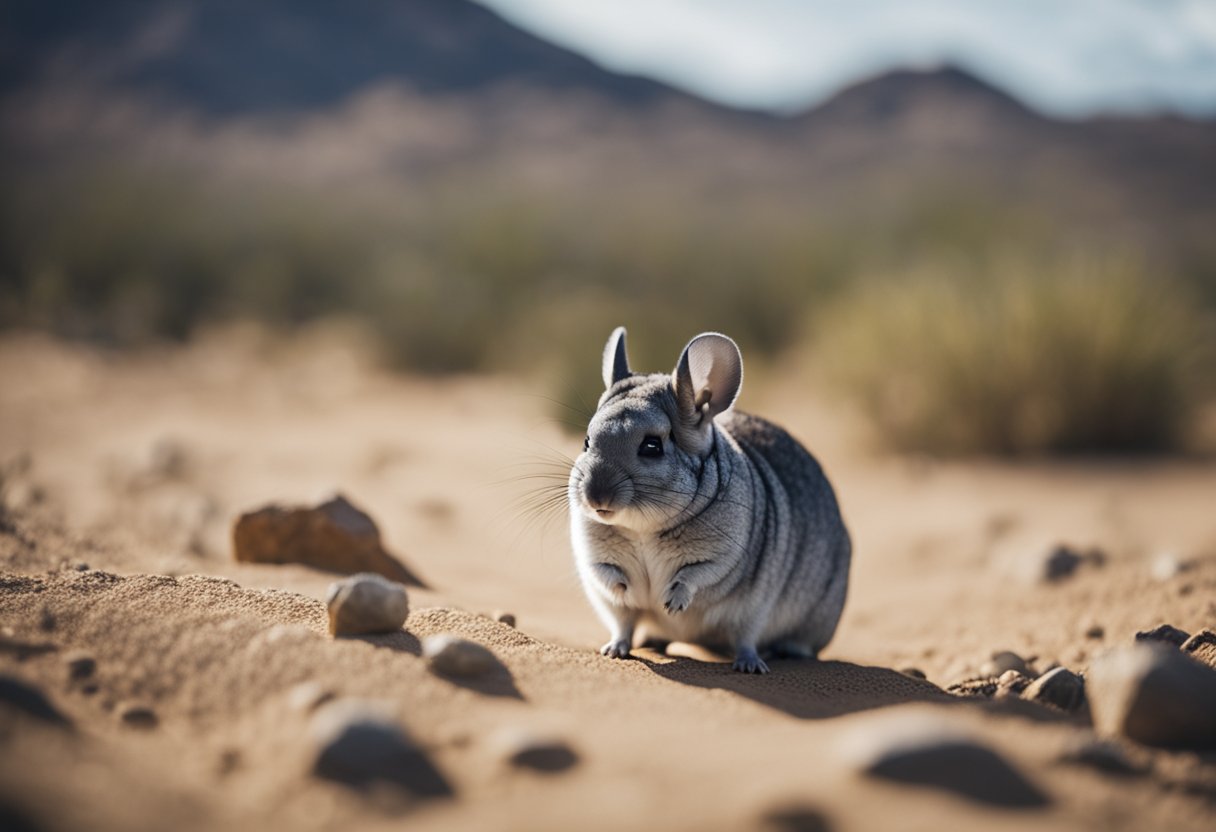Why Chinchillas Can’t Get Wet: Understanding Their Unique Care Needs
Chinchillas are fascinating pets with unique care needs, especially when it comes to grooming. The reason chinchillas can’t get wet is that their dense fur traps moisture, making it nearly impossible to dry properly. This can lead to serious health issues, including fungal infections. Understanding this is crucial for any chinchilla owner who wants to keep their pet healthy and happy.

When caring for a chinchilla, you should always prioritize their grooming routine. Since they cannot be bathed in water, they rely on dust baths to keep their fur clean and in good condition. Knowing the right techniques for grooming will help you avoid problems that can arise from wet fur.
Key Takeaways
- Chinchillas have dense fur that is not meant to get wet.
- Dust baths are essential for chinchilla grooming and hygiene.
- Proper care helps prevent health issues related to moisture.
Chinchilla Fur Properties

Chinchilla fur has specific characteristics that make it unique and highly adapted to their environment. Understanding these properties is essential for caring for your chinchilla and keeping it healthy.
Dense Fur and the Risk of Fungus
Chinchillas possess incredibly dense fur, with over 80 hairs growing from each follicle. This density helps them thrive in cold environments, but it also presents a challenge when they get wet. Moisture becomes trapped in their fur, making it hard to dry. When fur retains water, it can lead to a cold and uncomfortable animal.
The trapped moisture creates an ideal environment for fungal infections. Fungal growth can result in serious skin issues, leading to discomfort and health problems for your chinchilla. Therefore, it is critical to keep chinchillas dry to prevent these risks.
Water Retention and Temperature Regulation
The structure of a chinchilla’s fur allows for excellent temperature regulation. Their dense coat helps insulate them against cold weather while providing some protection from heat. When wet, this insulation fails, leaving your chinchilla vulnerable to temperature changes.
Water retention not only affects their body temperature but can also induce stress. Chinchillas are sensitive to extreme conditions, and being wet can make them feel insecure and uncomfortable. Their natural response is to avoid water, making dust baths a safer and more effective way for them to clean their fur without the risks associated with moisture.
Proper Chinchilla Grooming Techniques

Grooming your chinchilla properly is essential for their health. Using the right methods will keep their fur clean without harming their skin.
Dust Baths: the Ideal Cleaning Method
Dust baths are the best way to groom your chinchilla. These baths use special volcanic ash or chinchilla dust. You should provide a dust bath at least 2-3 times a week.
To set up a dust bath, you need a small, sturdy container. Fill it with about 1-2 inches of dust. Make sure your chinchilla can easily enter and exit. Allow them 10-15 minutes to roll and play in the dust. This process helps remove oils and dirt from their fur.
Make sure to clean the container after each use to keep it free of waste. You should also replace the dust regularly to maintain its effectiveness. If you notice your chinchilla is losing fur or has skin issues, consult a vet.
Alternatives to Water Bathing
Chinchillas should never be bathed in water. Water can get trapped in their dense fur, leading to skin problems. Instead, consider these alternatives for maintaining cleanliness.
Spot cleaning can be performed using a cloth or pet-safe wipes. If your chinchilla gets dirty, gently wipe the affected area. This can remove minor soiling without a full bath.
Another option is to use a grooming comb designed for small animals. Gently brushing your chinchilla can help remove loose fur and debris. It’s vital to be gentle, as their skin is sensitive. Avoid excessive brushing, which can cause stress.
Offering appropriate chew toys can also promote natural grooming. As your chinchilla gnaws, it helps keep their fur clean. Make sure to check toys regularly for safety.
Resources

To better understand why chinchillas cannot get wet, consider the following resources:
- Chinchilla Care: Learn about proper chinchilla care from experts. Websites like Planet Chinchilla provide helpful guides on maintaining their health.
- Health Risks: Discover the potential health risks for wet chinchillas. Articles on sites like Pango Vet outline important information about skin infections and more.
- Dust Bathing: Understand the importance of dust baths. You can read about why chinchillas prefer dust bathing instead of water baths at Chinchilla Joy.
- Fur Care: Explore the unique characteristics of chinchilla fur. The site The Spruce Pets details how their dense fur impacts their bathing practices.
- Common Misconceptions: Find out what common misconceptions exist around chinchilla bathing with resources like Oddly Cute Pets.
These links offer valuable insights and tips to help you care for your chinchilla properly. Familiarizing yourself with this information can lead to better care practices and improved health for your pet.
Frequently Asked Questions

You may have questions about the care of your chinchilla, especially regarding their sensitivity to water. Understanding the proper handling of your pet’s hygiene and natural behaviors will help you keep them healthy and happy.
What are the consequences for a chinchilla that becomes wet?
If a chinchilla gets wet, the dense fur can trap moisture. This can lead to serious health issues like fungal infections and skin conditions. It may also cause your chinchilla to feel cold, which can further weaken their health.
How should a chinchilla be dried if it accidentally gets wet?
If your chinchilla gets wet, dry them quickly. Use a soft towel to absorb as much water as possible. Afterward, gently use a hair dryer on a low setting, keeping it at a distance. Finally, offer a dust bath to help them clean and fluff their fur.
What is the natural behavior of chinchillas when it comes to water and rain?
In their natural habitat, chinchillas avoid water and rain. They come from dry, mountainous regions where they have adapted to stay clean without getting wet. They use dust to maintain their fur and keep it free from dirt and oil.
Why is a dust bath essential for a chinchilla’s hygiene?
A dust bath is crucial for a chinchilla’s hygiene. It helps remove oils and moisture from their fur, keeping it clean and fluffy. This process prevents fungal growth and maintains their overall health.
How do chinchillas maintain their fur when living in their natural habitat?
In the wild, chinchillas groom themselves using dust. Their dense fur requires this method to stay clean. Dust helps absorb oils and keep their fur free from parasites and debris.
Can chinchillas safely consume water without getting their fur wet?
Yes, chinchillas can safely drink water without wetting their fur. Provide them with a water bottle that lets them drink while keeping their fur dry. Make sure their drinking area stays clean and dry to maintain good hygiene.

